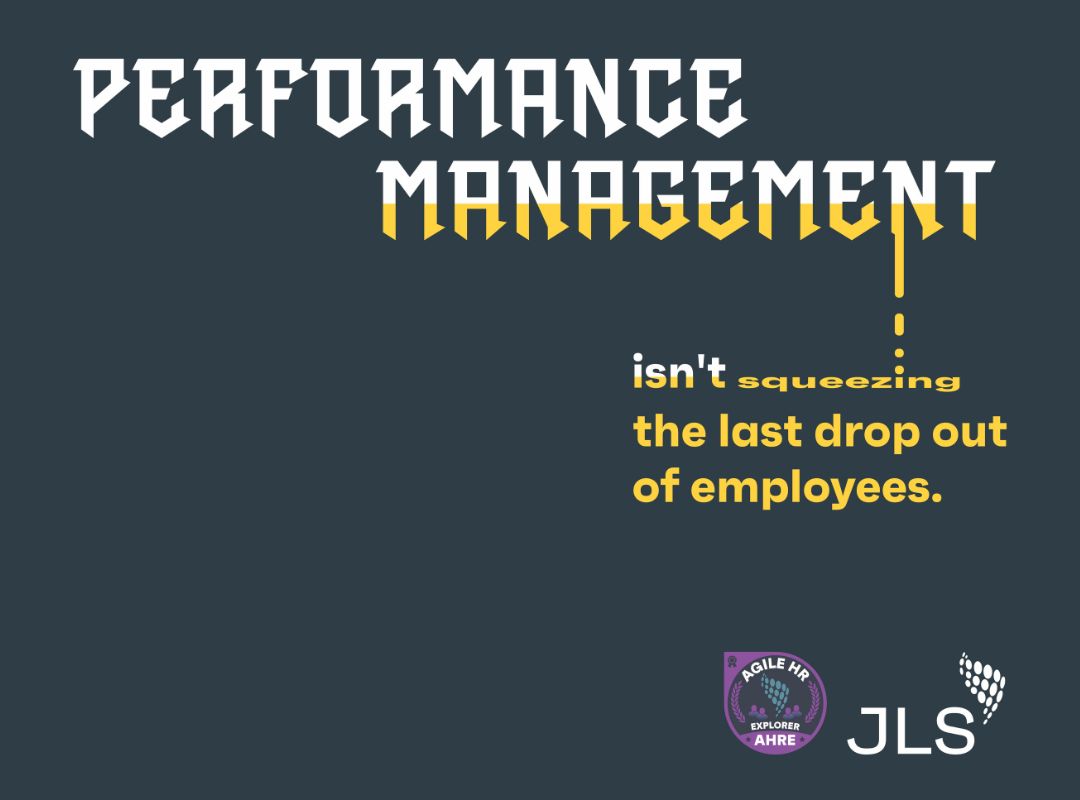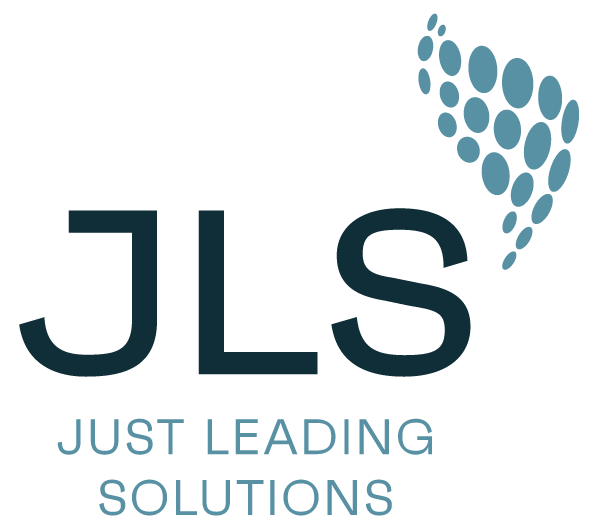
Agile Performance Management
From Dreaded to Desired: Turn your Performance Management into an effective Performance Acceleration approach that can sustain high-value creation and organizational success in today’s dynamic environment of the AI revolution.
Agile Performance Management as Key to Performance Acceleration
Traditional Performance Management systems no longer deliver on their promise to instill high performance. They turned into over-engineered, administrative, and expensive processes under increasing pressure to change.
However, this is not surprising: The system was created for a very different world: A world of stability and high task certainty. Unfortunately, most institutions and organizations no longer live in this world. Instead, they increasingly face a highly demanding and fast-changing environment that requires responsiveness and adaptability.
Enter Agile Performance Management (APM) – a revolutionary system designed by JLS for today’s fast-paced, ever-evolving business landscape.

What is Agile Performance Management (APM)?
APM addresses today’s challenges by applying agile principles to foster continuous improvement, accelerated learning, and greater employee engagement.
By transitioning to an Iterative Performance Flow, APM prioritizes collaborative value delivery and learning, which are crucial for increased responsiveness, adaptability, and long-term organizational success in the era of AI.
APM is optimized for agile businesses and organizations, but it can also be effectively implemented in environments with limited lean-agile practices or those operating on a hybrid model.

Our Net Promoter Score has gone through the roof since we made these changes. That tells me we’re doing something right. Employees feel valued and empowered, and they’re proud to work here.
Joanne, Head of People & Culture
Below Expectations – The Performance Review Paradox
Traditional performance management systems have fallen short of their intended goals. Once touted as a way to drive high performance, they’ve evolved into overly complex, bureaucratic, and costly processes. These systems often hinder rather than help, leading to inefficiencies, demotivation, stifled teamwork, and inflexibility. As the following data shows, these issues are widespread.
95%
of managers are dissatisfied
90%
of systems generate inaccurate data
70%
of employees believe managers are unfair
95%
of employees say it’s a waste of time
30%
of reviews decrease performance
20%
of employees feel inspired
2%
of HR give their system an A
210 hours
per year spent by the average manager
$ 35 Mio.
per year spent by a 10,000 FTE company
Checklist For a Strong Agile Performance Management

A strong Agile Performance Management Solution …
- aligns to agile values and principles and therefore fits organizations and business units that follow agile practices but also those who have not yet shifted or those who are not planning to shift to agile
- focuses on enabling collaborative and innovative value creation over compliance and individual task completion, shifting to performance acceleration rather than performance measurement
- leverages individual strength and personalized development over one-size fits all and often punitive approach, reducing the negative impact of feedback and ratings

The old way felt rigid and stifled my creativity. Now I have more ownership over my work, and I get to choose projects that challenge me and help me learn new skills. It’s a much more motivating environment.
Daniel, Software Engineer
Is your performance management system holding you back?
Find out with our audit workshop.

Pitfalls to Avoid
- Relabeling Performance Management to Performance Acceleration without understanding the difference
- Ignoring the science on feedback
- Multiplying instead of redesigning the process such as running a traditional performance management process quarterly instead of annually
- Making it all about compliance and documentation
- Continuing to use Performance Management as Jack-of-all-Trades

We used to dread performance review season. It was stressful for everyone involved. Now, I have regular one-on-ones with my team, and we talk about their progress, goals, and challenges openly. They’re much happier, and I feel like I’m actually helping them grow.
Emily, People Operations Manager
Key Steps in Redesigning a Performance Management System:
- Evaluate Your Current System: Assess the strengths, weaknesses, and challenges of your existing performance management system.
- Explore APM Potential: Analyze how APM can benefit your business unit or organization.
- Refine Your Problem Statement: Clearly articulate the specific issues or opportunities you aim to address through the redesign.
- Craft a Compelling Value Statement: Develop a concise and persuasive statement (elevator pitch) that highlights the expected benefits of the new system.
- Align Performance Definition: Ensure the definition of performance aligns with the evolving nature of work and the demands of your organization.
- Adopt an Iterative Approach: Implement an iterative performance flow that supports continuous improvement and adaptation.
- Reconfigure HR Interfaces: Coordinate the new performance management system with other HR functions like compensation, benefits, and learning and development.
- Optimize Performance Cycles: Determine the ideal cadence for performance reviews and feedback cycles.
- Enhance Goal Setting: Implement effective goal-setting practices that are aligned with organizational objectives and individual development.
- Reassess Appraisals and Ratings: Remove traditional employee appraisals and ratings, and consider alternative approaches.
- Leverage Scientific Insights: Incorporate the latest research on feedback, continuous improvement, and performance management.
- Design and Implement APM: Develop and implement an Agile Performance Management system tailored to your organization’s specific needs.
What Makes JLS A Unique Partner?

We understand Performance Management – traditional and agile and anything in between
We live and breathe Agile, but we are pragmatists not evangelists
We can design Agile Performance Management System, even if your company is not fully agile (yet)
Our Service Packages

Live Webinar Series
Live Webinar: Agile Performance Management
Ready to move beyond traditional or ‘in-name-only-agile’ performance management approaches and embrace Agile performance acceleration? This live webinar explores the components and benefits of genuine Agile Performance Management, shares actionable implementation steps, and answers your burning questions.
Next Live Webinar: April 08, 2025

Audits & Assessments
Performance Management Audit Workshop (3 Hours)
Uncover the strengths and weaknesses of your current Performance Management System and receive expert guidance on transitioning to a more Agile approach in a 3-hour workshop.

Cohort Development Series
Build Your Own Agile Performance Management (5 Months)
Join our exclusive Agile Performance Management cohort! This 5-month development program will guide you through the real time development, experimentation, and implementation of your own bespoke Agile Performance Management approach.
Next Cohort Starts: March 14, 2025
Limited Availability

Consulting Services
Redesign Your Performance Management (6-12 Months)
Partner with us to design, experiment, and launch an Agile Performance Management system tailored to your organization. Drive continuous improvement, foster engagement, and achieve peak performance.
Agile Performance Management FAQ
-
What is Agile Performance Management (APM)?
Agile Performance Management (APM) is a revolutionary approach to continuous performance acceleration designed for constant and sustainable value creation in today’s fast-paced, ever-evolving business landscape. While APM is optimized for Agile business units and organizations it is also effective for those with limited lean-agile practices or on a hybrid model.
-
What is wrong with traditional performance management systems?
Traditional performance management systems are no longer effective in today’s fast-paced business environment. They are often over-engineered, bureaucratic, costly, and built for a world of stability that no longer exists. This leads to a lack of responsiveness and adaptability, hindering organizational growth.
-
How is Agile Performance Management (APM) different?
APM is a revolutionary approach designed to meet the challenges of today’s dynamic business landscape. It leverages agile principles, prioritizing collaborative value creation, adaptability, frequent feedback and continuous improvement. It relies on fast learning and development cycles, and a strong focus on impact, employee engagement and growth. APM enables organizations to respond quickly to change and foster a culture of high performance.
-
Why is Performance Management important?
Effective performance management is vital for businesses, playing a pivotal role in achieving constant and sustainable high-value creation and organizational success. It provides direction, clarity, and focus, and fosters a culture of continuous improvement while empowering and enabling employees to do their best work in a high-performing environment.
-
Is Agile Performance Management effective?
Agile Performance Management has been shown to be effective in improving employee engagement, productivity, business value creation, and adaptability in fast-changing environments. Agile Performance Management, as advocated by Just Leading Solutions, emphasizes the importance of collaborative value creation, individual growth, and continuous improvement in a performance management approach. By embracing Agile principles and methodologies, organizations can enhance their ability to adapt to change, respond to customer needs, and drive innovation, ultimately leading to improved business outcomes.
-
What are the key benefits of implementing Agile Performance Management?
APM offers numerous benefits, including:
- Higher Engagement: Employees feel more valued and involved through frequent feedback and continuous improvement initiatives.
- Increased Adaptability: Teams can pivot quickly to address new challenges and opportunities.
- Enhanced Learning Growth: The focus on learning and development drives individual and organizational learning and growth.
- Accelerated Value Delivery: APM fosters a culture of high performance, ensuring consistent value creation.
-
Is Agile Performance Management only suitable for agile organizations?
No, APM is not limited to agile organizations. While it is ideal for businesses already embracing agile practices, APM can be effective even for organizations that are not fully agile. It can be adapted to any organization seeking to improve its performance management system. APM adapted to work in environments with no or limited lean-agile practices or hybrid models.
-
How can I get started with Agile Performance Management?
Transitioning to APM can be done step-by-step. Begin by assessing your current performance management system and identifying areas for improvement. Then, explore how APM principles can be incorporated to foster a more agile, responsive, and growth-oriented culture. Consider partnering with experts to guide your implementation process for optimal results.
-
Who can I contact for more information or professional help?
Feel free to reach out to our JLS team. We look forward to hearing from you.
Further Reading
